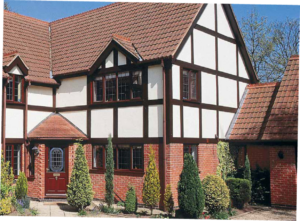professional-double-glazing8010
professional-double-glazing8010
Beware Of This Common Mistake When It Comes To Your Double Glazing Materials
Understanding Double Glazing Materials: A Comprehensive Guide
Double glazing has actually ended up being a basic practice in modern-day building and construction and home renovation, mainly due to its undeniable benefits in energy effectiveness, soundproofing, and general comfort. At the core of this innovation lies an array of products, each contributing unique advantages to the double glazing phenomenon. This article checks out the various products utilized in double glazing, their residential or commercial properties, pros and cons, and how they impact the general efficiency of windows.
What is Double Glazing?
Double glazing is a kind of insulation that includes 2 panes of glass separated by a gap, generally filled with air or inert gas. This configuration serves a primary function: to reduce heat transfer in between the exterior and interior of a building. As a result, double-glazed windows assist retain warmth during winter season and keep areas cooler throughout summertime.
Advantages of Double Glazing
- Energy Efficiency: Minimizes heat loss, lowering energy bills.
- Sound Insulation: Reduces outdoors noise, boosting convenience.
- Condensation Reduction: Lesser condensation suggests less danger of mold.
- Increased Security: Tougher than single-pane alternatives, providing higher security versus burglaries.
- Enhanced Property Value: Homes with double glazing are often more enticing to buyers.
Typical Double Glazing Materials
1. Glass Types
The efficiency of double glazing is mostly influenced by the kind of glass utilized. Below are the common kinds of glass utilized in double glazing:
| Glass Type | Description | Advantages | Disadvantages |
|---|---|---|---|
| Float Glass | Basic glass, usually used in basic applications. | Cost-effective | Less insulation compared to Low-E glass. |
| Low-Emissivity (Low-E) | Glass covered with a thin metal layer to reflect heat. | Excellent insulation, protects natural light. | Higher initial expense. |
| Tempered Glass | Heat-treated glass that is more powerful and more secure. | More long lasting, resistant to effect. | Can be more costly due to processing. |
| Laminated Glass | Glass layers bonded with a plastic interlayer. | Deals security and UV defense. | Heavier and more pricey alternatives. |
2. Spacer Bars
Spacer bars are the products that separate the two panes of glass in a double-glazed unit. Numerous products can be used for this function:
| Spacer Bar Material | Description | Benefits | Downsides |
|---|---|---|---|
| Aluminium | Light-weight and rigid but conductive. | Durable and cost-effective. | Can cause condensation due to heat transfer. |
| PVC-U | A plastic choice, less conductive compared to aluminum. | Good thermal performance. | Might not be as long lasting as aluminum. |
| Warm Edge Technology | Typically includes a composite material. | Minimizes thermal bridging, enhancing performance. | Generally more pricey. |
3. Gas Fills
The space between the panes of glass can be filled with air or particular gases to improve insulation.
| Gas Type | Description | Advantages | Downsides |
|---|---|---|---|
| Air | Regular air without any special homes. | Affordable and sufficient for lots of applications. | Lower insulation than gas-filled systems. |
| Argon | Inert gas that is denser than air. | Exceptional thermal insulation. | More pricey than air but typically justified. |
| Krypton | Heavier and more efficient than argon. | Best insulation of the gas options. | Much higher cost and needs specialized techniques. |
Aspects Influencing the Choice of Double Glazing Materials
When selecting products for double glazing, several aspects ought to be taken into account:

- Climate: The regional environment has a significant influence on energy performance, dictating the need for specific glass types or gas fills.
- Budget: Initial expenses may outweigh long-term advantages. Homeowners ought to stabilize upfront costs with potential savings.
- Aesthetic Preference: Different frames and glass types offer a variety of visual designs that need to match the architecture of the home.
- Building Regulations: Local structure codes might determine particular products, demanding adherence to these guidelines.
Upkeep of Double Glazed Units
Beyond the installation of double glazing window installation – fapropertieslimited.com, glazing systems, regular maintenance is vital for longevity and efficiency. Here are a couple of upkeep suggestions:
- Regular Cleaning: Use suitable cleaners for both glass and frames to avoid accumulation of dirt and gunk.
- Examine Seals: Periodically examine window seals for damage or wear, as compromised seals can considerably lower insulation effectiveness.
- Condensation Control: Monitor for condensation in between panes, which might suggest seal failure and require repair work.
Regularly Asked Questions (FAQs)
Q: How long do double-glazed windows last?
A: Typically, double-glazed windows can last anywhere from 20 to 35 years, depending upon the quality of materials and setup.
Q: Can I change just one pane of a double-glazed unit?
A: It is normally recommended to replace the whole double-glazed unit for optimum efficiency, as replacing just one pane can result in mismatching insulation properties.
Q: Are double-glazed units more costly than single glazing?
A: Yes, double-glazed units normally have a higher in advance expense due to sophisticated materials and building, however they often pay for themselves through energy savings.
Q: Will double glazing minimize sound pollution?

A: Yes, double-glazing effectively minimizes outdoors noise, making your living environment more peaceful.
Choosing the right materials for double glazing is a vital step in boosting energy performance, sound insulation, and the total comfort of a home. With different glass types, spacer bars, and gas fills offered in the market, comprehending these elements can substantially affect performance. Property owners must consider their distinct needs, preferences, and regional aspects to achieve the best arise from their investment in double glazing technology. Following upkeep practices and remaining informed about developments in glazing products will guarantee lasting advantages from this useful and necessary function of modern architecture.


